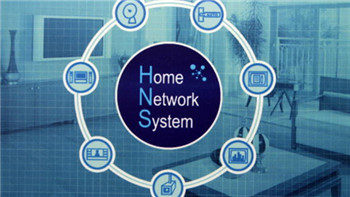
The Reality Editor, a tool developed by the Fluid Interfaces Group at Massachusetts Institute of Technology, points to a future in which everything from chairs and beds to televisions and cars can be connected, manipulated and controlled in new ways.
麻省理工学院(MIT)“流体界面小组”(Fluid Interfaces Group)开发的工具“现实编辑器”(Reality Editor)给我们展示了这样的未来:从椅子、床到电视、汽车的一切物品都能够以新的方式连接、操纵和控制。
Household objects equipped with processors and communications capabilities can, for example, be programmed so that your bed can turn on the heating system in your car as soon as you get up in the morning.
比如,可以对配备处理器和通信功能的家用物品进行编程,这样你早上一起来,你的床就会启动你的汽车的供暖系统。
But if such technologies might make home living more convenient, they will also usher in profound changes for businesses and society.
但是,如果说这些技术可能会让家居生活更为便利,那么它们也会给企业和社会带来种种深刻变化。
Critically, internet of things technologies — which include processors, software and web-enabled sensors — also allow objects to capture and transmit data instantly and constantly.
重要的是,包含处理器、软件和可联网传感器在内的物联网技术,让物品能够连续不断地瞬间捕捉到数据并进行传输。
On the plus side, this can pave the way for the delivery of more efficient services. In New York, for example, rubbish bins and recycling units developed by Bigbelly, a US-based technology and waste management company, can automatically notify collection agencies when they are full.
好的一面是,这为提供更高效率的服务铺平了道路。比如,在纽约,美国科技和废品处理公司Bigbell研发的垃圾箱和回收站能够在满了以后自动通知收集机构。
With everything from lampposts and traffic lights to weather satellites generating information all the time, cities can now analyse data to improve the world around us. Harriet Green, general manager of internet of things and education for US technology company IBM, says: “Knowing from these predictive models where the pollution is coming from allows city planners to make important decisions on how to improve air quality.”
鉴于从灯柱、交通灯到气象卫星的一切每时每刻都在产生信息,如今的城市可以对数据进行分析以改善我们的生活环境。美国科技公司IBM物联网和教育总经理哈丽雅特•格林(Harriet Green)表示:“通过预测模型得知哪里在产生污染,能够让城市规划者就如何改善空气质量做出重要决策。”
Such technologies offer companies the chance to cut costs, says Gabe Batstone, chief executive of Contextere, a software start-up that develops services for industrial workforces based on machine learning — the technique behind much artificial intelligence — and internet of things technologies. With sensors generating data on the status of equipment, the work of maintaining machinery and preventing breakdowns will be transformed, saving companies large amounts of money, Mr Batstone says.
软件初创企业Contextere首席执行官盖布•巴特斯通(Gabe Batstone)表示,这些技术给企业提供了削减成本的机会。该公司基于机器学习(很多人工智能背后的技术)和物联网技术开发面向工人的服务。巴特斯通说,传感器产生有关设备状态的数据,使机器维护和故障防止工作彻底改观,为企业节省大量资金。
“There’s information on the device, the device knows what maintenance is needed and the employee has access to a supercomputer — otherwise known as a cell phone — right there,” he says. “That’s going to have a monumental impact on business operations.”
“设备上有信息,设备知道需要何种维护,雇员可以通过一台超级计算机——或者叫作手机——得知信息,”他说,“这将给商业运营带来深远影响。”
In the water industry, for example, sensors can supply continuous data on the physical integrity of pipes, helping to detect weaknesses and prevent leaks.
比如,在水务行业,传感器可以连续不断地提供有关管道完好性的数据,帮助探测薄弱之处,防止泄漏。
The same principle can also be put to work in the human body. Wearable and implantable sensors that can track everything from blood sugar levels to heart rates will allow irregular or life-threatening symptoms to be detected early. They will also enable people to take steps — through changes to diet or exercise regimes — to manage conditions such as diabetes or to lower their risk of illness.
同样的原则也可应用于人体。可穿戴和可植入传感器能够追踪从血糖水平到心率的一切体征,从而及早检测出不规律或者威胁生命的症状。这些传感器还能让人采取改变饮食或锻炼方式等举措,来应对糖尿病等病症或者降低罹患疾病的风险。
This could turn healthcare from a system designed to cure diseases and repair injuries to one that works to prevent illness and maintain good health.
这可能使医疗从一个旨在治疗疾病,修复伤痛的体系,转化为旨在预防疾病,保持健康的体系。
Of course, such changes also have implications for human resources. When equipment can be fixed remotely and patients remain at home, engineers and nurses may need to take on different roles. For some companies, it will mean hiring people with new skills.
当然,这样的变化也会对人力资源造成影响。当设备可以安装在相距遥远的地方,病人可以待在家中时,工程师和护士或许需要承担不同的职责。对一些企业而言,这将意味着雇佣具备新技能的人。
The advent of smart thermostats such as Nest, for example, means plumbing and heating companies now need IT skills since a system breakdown may have as much to do with a broadband connection as with the pipes or the boiler. “It’s turned that industry on its head,” says Tim Devine, a digital business expert at PA Consulting Group.
比如,Nest等智能恒温器的问世,意味着管道和供暖公司现在需要IT技能,因为系统的故障有可能和管道或者锅炉有关,也有可能和宽带连接有关。“这让这个行业发生了翻天覆地的变化,”博安咨询(PA Consulting)数字业务专家蒂姆•迪瓦恩(Tim Devine)说。
“The guy running a boiler company, where the key still is engineering, pipes, gas and big chunks of metal, is now running an IT company.”
“尽管一家锅炉公司的关键依然是工程、管道、天然气和大型金属件,但运营锅炉公司的人现在运营着IT公司。”
Internet of things technologies will also create a need for new services and business models. “It’s great that I can get a warning on my smartphone telling me someone is walking around my house,” says Mr Devine. “But I need to be able to ring a local security service, otherwise I’m just worried.”
物联网技术还会催生对新服务和商业模式的需求。“我能从智能手机上收到警告,告诉我有人在我家周围晃悠,这很棒,”迪瓦恩说,“但我也需要能够致电当地的安保服务,否则我只能干着急。”
Moreover, because these new models depend on a complex system of organisations — from software companies to broadband service providers and device manufacturers — questions of liability will arise.
此外,由于这些新模式取决于从软件公司、宽带服务提供商到设备制造商等多个组织组成的复杂系统,将产生责任归属的问题。
Mr Devine cites the example of a home heating system: “What happens with the boiler if the thermostat turns itself up while you’re away and you come back to a £1,000 heating bill. Whose liability is that?”
迪瓦恩举了一个家庭供暖系统的例子:“如果恒温器在你不在的时候把锅炉打开,你回来以后收到了1000英镑的供暖费账单。谁来承担这个责任?”
While such questions have yet to be addressed, Mr Batstone argues that consumer technology has already paved the way for adoption of the internet of things by a broad range of businesses.
尽管这样的问题尚未得到解答,但巴特斯通认为,消费者技术已经为物联网被各类企业采用铺平了道路。
“In our personal life, we’re used to our calendar telling us what time to leave to go to a meeting, giving us a map and checking the traffic,” he says.
“在我们的个人生活中,我们已经习惯由我们的日历告诉我们什么时候该去参加会议、提供我们地图,并查看交通状况,”他说。
“So what the consumer side has already done is to allow us to accept that artificial intelligence and machine learning can be useful.”
“因此,消费端已经让我们接受这样一点,那就是人工智能和机器学习可能是有用的。”











